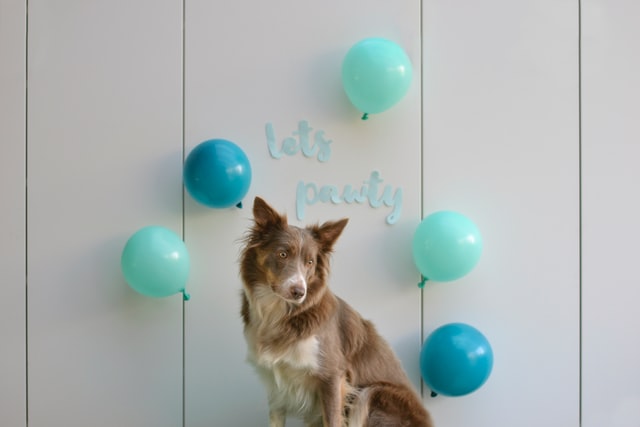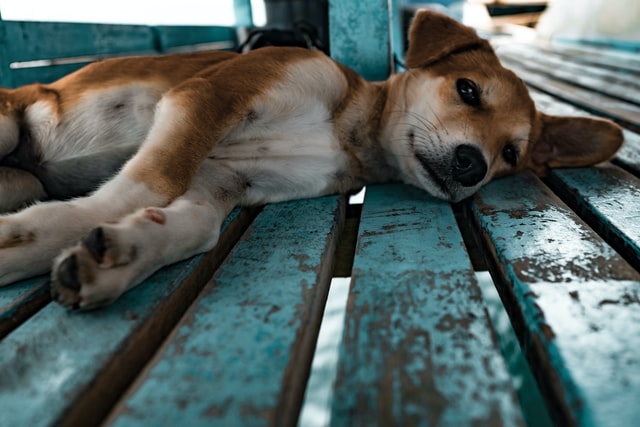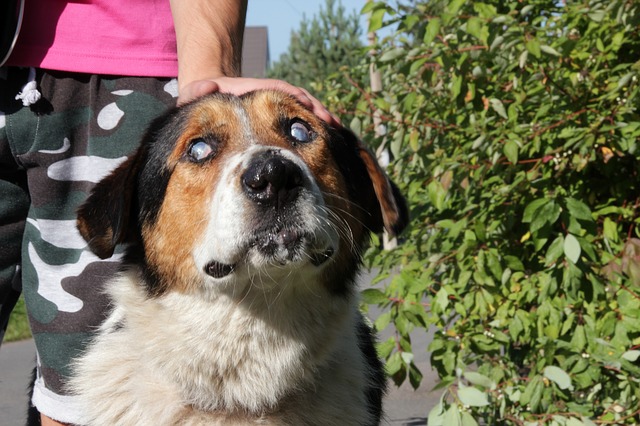Did you know that dogs can be afraid of balloons? Some dogs are scared of the sound they make when being popped, while others are just creeped out by them because they float around mysteriously.
No matter the reason, it is important to understand their fears so that you can help them overcome these issues and live a happy life.
While a balloon phobia seems funny or irrational to some people, our dogs are certainly not laughing.
Keep scrolling to see why your dog is afraid of balloons and how you can help!
Signs That Your Dog Is Afraid Of Balloons
Fear in dogs can manifest in many different ways, which is why it is important to understand your dog’s unique personality and their body language.
Dogs that are afraid of something will often show the following signs:
- Keep their tail tucked between their legs
- They lick their lips a lot
- Their ears are flat or pinned back
- Using the “whale eye”
- They nip or bite when touched or approached
Let’s elaborate a little on these different types of body language in fearful dogs.

Your Dog’s Tail Is Tucked Between Their Legs
It is the most common sign a dog owner identifies when their dog is not acting normally or is feeling stressed. It can happen with any breed of dog, big or small.
It is likely that you will see your beloved pooch try to hide his tail between his legs or will make it go straight down or show no movement of the tail.
Sometimes, a slightly unsure dog shows very little movement of the tail, wagging gently from side to side showing their concern about the issue.
Your Dog Is Doing A Lot Of Lip Licking
Dogs that are experiencing anxiety and are feeling fearful or nervous will often lick their lips excessively.
This can be accompanied with drooling as well but normally that is a sign of nausea.
Your Dog’s Ears Are Not Upright
One of the most obvious signs of distress or concern in dogs can be the position of their ears.
Dogs that are nervous, concerned or unsure will often keep their ears pinned back or flat against their head, instead of upright and alert.
Your Dog Is Showing The “Whale Eye” (Half-Moon Eyes)
A “whale eye” or “half-moon eye” is used to describe the way that a fearful or nervous dog's eyes appear. Because they are worried, their eyes are wide, with the white part showing around the whole iris or just part of it. They are usually staring from the side as well, similar to a whale.
If their concern is over a scary balloon, then it is likely they will be staring it down with the intense whale eye.
Are Dogs Afraid Of Hot Air Balloons?
Dogs can certainly show fear around massive hot air balloons.
First of all, they are huge and second of all, they simply don’t understand what they are. This fearful behavior is completely normal around such strange and giant floating objects.
If your dog was already bothered by small, helium filled balloons, they are almost guaranteed to be startled by humongous one.
Also, the loud burner can be enough to scare a dog who’s never been around one.
How To Help A Dog With A Fear Of Balloons
A dog that has a fear of balloons needs special attention and help to overcome it.
Working patiently and consistently will be your best bet for getting your dog to be less afraid of harmless balloons.
Don’t Overwhelm Them
If you know that your dog is afraid of balloons, it’s probably a good idea to avoid taking them places where they will run into a lot of them.
That means no little kid parties or cake, unfortunately!
Also, do your best to avoid letting a balloon pop near your dog if you know that they hate the startling sound.
This is probably how the fear started to begin with.
Always ensure that your dog has an exit when they are in an environment where balloons may become a problem.
Try To Condition Your Dog’s Emotional Response
Techniques that involve conditioning a dog’s emotional response can help significantly in anxiety inducing situations.
These techniques are also known as counter-conditioning techniques, which means to divert an emotional response from a dog and direct their focus to something that they enjoy.
Steps to follow in this technique are:
- The dog owner must think of something which their dog loves to do, eat or enjoy the most. It can be anything like a treat or your companion’s favorite ball.
- Sit on the sofa or any stable object and place the balloon right next to you.
- Let your pooch know that you are having his favorite treats in your hand and let him come closer to you and reward their bravery with food.
- Once your dog is more comfortable, this is when you slowly start to move the scary balloon. Do not touch them with it, only show them that by moving it around you are demonstrating that it is not dangerous.
- Give a small break to the whole thing and start normally by sitting next to the balloon again.
- Keep repeating the process until your dog gets used to it and is acting more comfortable. You will have to do this several times before they no longer react to the balloon. Give days in between trying again.
When this process is repeated again and again then eventually your pooch will become full of excitement at the sight of a balloon.
They will think that balloons are a sign of great treats ahead and this will make them love balloons rather than hate them.
his will do away with the habit of your dog being afraid of balloons.
Desensitize Your Dog
This technique works wonders on dogs who are very apprehensive or distressed near balloons.
Softening or desensitization techniques involve the reduction of sensitivity of a dog towards something which triggers anxiety.
Thus it works wonders on a dog afraid of balloons.
Under this process, the balloons are introduced as less scary objects.
- Much like the emotional response technique, treats are your friend!
- With treats in one hand a deflated balloon in the other, encourage your dog to approach you and eat from your treat hand. Be sure not to move the balloon towards the pet, we are trying to establish trust and confidence.
- When you feel it’s the right time to blow the balloon try filling it with some air. Alternatively, keep feeding your dog with treats, and keep increasing the air in the balloon.
- Notice if your dog is showing any signs of anxiety or is he still feeling calm. Continue feeding him with more treats and keep increasing the air in the balloon.
Gradually by increasing the air in the balloon, and feeding the dog with treats over several days you will be able to achieve more confidence and less fear.
Are Balloons Harmful To Dogs?
In the absence of supervision, a burst or deflated balloon can turn into a potential choking hazard.
It can also lead to a blockage causing a major surgery or even the death of your pooch.
So Why Is Your Dog Afraid Of Balloons?
Dog’s can have unexplained anxiety over an object, person or place for little to no reason.
Most of the time, it’s irrational and other times they have a negative association or memory due to trauma from fear or pain.
These behaviors can be overcome with hard work, patience and desensitization, resulting in a much happier and less fearful companion.


![[Tested & +20 hrs] Anti Anxiety Music for Anxious Dogs](https://doghealthknowhow.com/wp-content/uploads/2021/11/Anti-Anxiety-Music-for-Anxious-Dogs-768x529.jpg)


